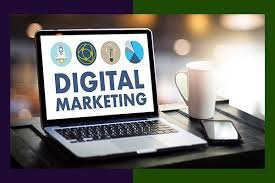Understanding Programmatic Display Advertising: A Comprehensive Guide
In the rapidly evolving landscape of digital marketing, programmatic display advertising stands out as a powerful tool that automates the buying and selling of ad space. This method leverages machine learning and artificial intelligence to make the process more efficient and effective, allowing marketers to reach their target audience with precision. This article delves into the intricacies of programmatic display advertising, its benefits, and how it shapes the future of digital marketing.
What is Programmatic Display Advertising?
Programmatic display advertising refers to the automated process of purchasing digital ad space using software and algorithms. Unlike traditional methods, which involve human negotiations and manual insertion orders, programmatic advertising relies on real-time bidding (RTB) and automated systems to streamline the ad-buying process.
How Does Programmatic Advertising Work?
- Ad Inventory: Publishers make their ad inventory available on ad exchanges, which act as digital marketplaces where advertisers can bid for ad space.
- Real-Time Bidding (RTB): When a user visits a website, an auction takes place in milliseconds. Advertisers bid for the opportunity to display their ads to that user based on predefined criteria such as demographics, interests, and browsing behavior.
- Ad Placement: The highest bidder wins the auction, and their ad is instantly displayed to the user.
- Data Analysis: Advanced algorithms analyze the performance of the ads, optimizing them in real-time to enhance effectiveness.
Types of Programmatic Advertising
- Open Auctions: These are public auctions where any advertiser can bid for ad space. This type of auction offers a wide reach and competitive pricing.
- Private Marketplaces (PMP): These are invitation-only auctions where selected advertisers can bid for premium ad inventory. PMPs provide more control and higher quality placements.
- Preferred Deals: In this arrangement, advertisers and publishers negotiate a fixed price for ad space without an auction. This ensures guaranteed placements and stable pricing.
- Programmatic Guaranteed: This involves direct deals between advertisers and publishers for specific ad placements and impressions at a fixed price.
Benefits of Programmatic Display Advertising
- Efficiency: Automating the ad-buying process saves time and reduces human error. It enables advertisers to manage multiple campaigns simultaneously with ease.
- Precision Targeting: Programmatic advertising uses data to target specific audiences based on various parameters such as location, behavior, and interests. This ensures that ads reach the most relevant users.
- Real-Time Optimization: Algorithms continuously analyze ad performance, allowing for real-time adjustments to improve campaign effectiveness.
- Scalability: Programmatic advertising can easily scale campaigns to reach a global audience across various devices and platforms.
- Cost-Effectiveness: By using real-time bidding, advertisers can achieve better ROI by paying only for impressions that are likely to convert.
Challenges and Considerations
- Ad Fraud: The automated nature of programmatic display advertising makes it susceptible to ad fraud, where fraudulent activities generate fake impressions or clicks. Implementing robust security measures and partnering with reputable platforms can mitigate this risk.
- Transparency: The complexity of programmatic systems can lead to a lack of transparency regarding ad placements and costs. Advertisers should work with trusted partners and demand detailed reporting to ensure clarity.
- Ad Viewability: Ensuring that ads are seen by users is crucial. Advertisers should focus on placements with high viewability rates to maximize the impact of their campaigns.
- Data Privacy: With increasing concerns about data privacy, advertisers must comply with regulations such as GDPR and CCPA. Using first-party data and obtaining user consent are essential for maintaining trust and compliance.
The Future of Programmatic Advertising
The future of programmatic display advertising looks promising as technology continues to evolve. Here are some trends shaping its future:
- Artificial Intelligence (AI) and Machine Learning (ML): AI and ML will further enhance targeting accuracy and ad performance by analyzing vast amounts of data and predicting user behavior.
- Connected TV (CTV): Programmatic advertising is expanding to CTV, allowing advertisers to reach audiences on streaming platforms and smart TVs.
- Voice-Activated Devices: As voice-activated devices become more prevalent, programmatic advertising will adapt to deliver ads through these new channels.
- Enhanced Personalization: Advances in data analytics will enable more personalized ad experiences, increasing engagement and conversion rates.
- Integration with Other Channels: Programmatic advertising will become more integrated with other marketing channels, creating seamless, omnichannel experiences for users.
Conclusion
Programmatic display advertising has revolutionized the digital marketing landscape by automating the ad-buying process and enabling precise targeting. Its efficiency, scalability, and real-time optimization capabilities make it an indispensable tool for modern marketers. However, challenges such as ad fraud, transparency, and data privacy must be addressed to fully harness its potential. As technology advances, programmatic advertising will continue to evolve, offering even more sophisticated and effective ways to reach and engage audiences. Embracing these changes and staying ahead of trends will be key for advertisers looking to succeed in the dynamic world of digital marketing.








